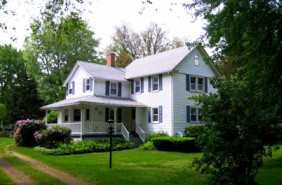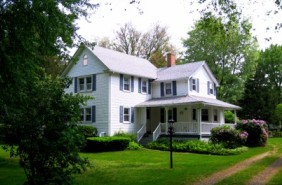I recently received an email from a reader interested in the West Hartford market. Because their question was related to property taxes, something people are fixated on most of the time, I thought I would share the conversation with the masses…
When looking online, every once in a while I am thrown off when i see two similar houses that have two totally different “estimated tax” amounts. A good example i found this morning is:
Property A (Est. Taxes: $7,641)
Property B (Est. Taxes: $4,112)
Both have similar square footage, same bedrooms, similar size lot, but two totally different estimated tax amounts.
Any idea why that is?


Here’s most of the reason why the estimated tax amounts are so different in this case:
The local Multiple Listing Service automatically calculates taxes for the agent when they enter the listing into the MLS database. The system does not appear to do the calculations correctly if the town is doing some type of phase-in, or if the mill rate recently changed. In this case, West Hartford is doing a phase-in and the mill rate recently changed.
What agents should do to properly calculate the taxes is manually calculate them on their own or call the town tax department and ask for the current year’s property taxes for the parcel excluding any special adjustments for veteran status, senior citizen discount, etc. Agents really need to be more diligent about tax amounts because it’s something that buyers look at closely. The local MLS also needs to fix the program for automatically calculating taxes, but those requests seem to fall on deaf ears.
These are the most common reasons why you will see estimated tax amounts vary widely on seemingly similar properties, user and system error.
So, the correct taxes for Property A (based on the new mill rate of 37.09) is $5,698 and the correct taxes for Property B is $4,448, a difference of $1,250 this year.
And why the actual $1,250 difference in this case? There are a few reasons to explain that as well.
The assessment which drives the taxes is based off of some of the things the reader mentioned like square footage, lot size, # beds, # baths, etc. It’s also driven by what the Assessor sees as external and internal condition and the improvements the owners have made. The one major difference that I see between Property A and Property B is that on the Assessor’s website, Property A is called out as having an updated kitchen. That means when the owners of Property A improved their kitchen, they pulled town permits. That then alerts the town to place more value on the assessment for that property. Often we’ll see homeowners make improvements without notifying the town because they may get “penalized†with higher taxes. This type of system deters people from pulling town permits when they have improvements done on their home and creates a whole separate host of issues.
Additionally, when the town did its revaluation in October 2006, residents had the opportunity to challenge their assessment. Some homeowners choose to challenge, while others do not. So the homeowner on Property B may have challenged and received a modified lower assessment, while the owner on Property A did not.
Finally, the location may make somewhat of a difference. Property A is in a neighborhood that would have slightly higher home prices, so the Assessor probably has some way to factor that into their analysis.
In order to be perfectly clear on the tax amount for a property, call the town hall’s tax collection office and ask for the property taxes with no exemptions. Just don’t call on a Friday because they’re closed. 😐